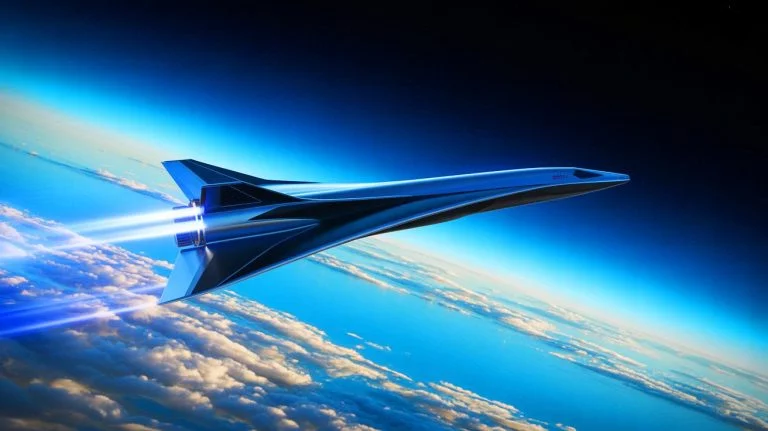| IN A NUTSHELL |
|
The realm of aerospace technology is ever-evolving, and the Invictus program is a testament to human ingenuity and determination. With a vision to develop a Mach 5 spaceplane by 2031, Invictus represents an ambitious stride toward the future of space travel. This groundbreaking initiative is not only a beacon of technological advancement but also a symbol of resilience. Despite previous setbacks, the renewed efforts by a skilled consortium signal a promising leap into the next era of aviation and space exploration.
The Legacy of Innovation: From HOTOL to Invictus
The journey to Invictus is rooted in a history of persistent innovation. In the early 1980s, British Aerospace and Rolls-Royce embarked on an ambitious project known as the Horizontal Take-Off and Landing (HOTOL) spaceplane. This initiative aimed to create a single-stage-to-orbit vehicle capable of taking off and landing from conventional runways. The design was revolutionary, promising to breathe air for most of its flight to significantly reduce weight. However, despite initial enthusiasm and government backing, the project was deemed overly ambitious and lost funding in 1987. Yet, the spirit of HOTOL lived on through the establishment of Reaction Engines Limited in 1989. Alan Bond, John Scott-Scott, and Richard Varvill spearheaded this effort, determined to realize the pioneering concepts of HOTOL.
Fast forward to today, the Invictus program stands as a beacon of hope, fueled by the same innovative spirit. With support from renowned organizations like Frazer-Nash, Spirit AeroSystems, and Cranfield University, the program is poised to transform space travel. The Invictus spaceplane aims to achieve hypersonic speeds and potentially pave the way for orbital launch systems, marking a significant milestone in aerospace technology.
Revolutionary SABRE Technology: The Heart of Invictus
At the core of the Invictus program is the Synergetic Air-Breathing Rocket Engine (SABRE), a game-changing technology that merges the best of jet and rocket propulsion. This innovative engine can transition between modes, operating like a jet during takeoff and a rocket as it approaches the edge of space. By breathing air to burn liquid hydrogen fuel, the engine saves valuable weight since no onboard oxygen is necessary during initial flight phases. As the spaceplane ascends, it switches to liquid oxygen, though in much smaller quantities than traditional rockets would require.
The pre-cooler system of the SABRE engine is a marvel of engineering. It uses hydrogen fuel to cool a liquid helium coolant, which then flows through a network of tubes to chill incoming air from over 1,832 °F to ambient temperature in less than 1/20th of a second. This cooled air is mixed with liquid hydrogen and ignited, propelling the Invictus spaceplane to unprecedented speeds. Such innovation is not just about achieving Mach 5; it sets the stage for potential speeds exceeding Mach 25 in rocket mode, opening new frontiers in low-earth orbit travel.
Funding and Strategic Vision: A Collaborative Effort
The Invictus program is backed by significant funding and strategic vision. With €7 million (approximately US$8.1 million) from the European Space Agency (ESA), the project aims to establish a cutting-edge European launch capability that surpasses current technologies, such as the Ariane 6 rocket. The UK Space Agency also lends its support, underscoring a commitment to advancing Britain’s hypersonic and space efforts.
This initiative is not solely about technological advancement; it is a dual-use technology with applications in both civilian and military sectors. The program seeks to develop propulsion systems, advanced materials, and artificial intelligence to enhance mobility, defense, and space access. Dr. Tommaso Ghidini of the ESA articulates the strategic vision: mastering reusable, air-breathing propulsion can revolutionize how we move across the planet and beyond.
The Future of Aerospace: Beyond Hypersonic Flight
As the Invictus program progresses, it holds the potential to redefine aerospace paradigms. Hypersonic flight is not merely the next frontier; it is a gateway to new possibilities in mobility and space exploration. By achieving speeds that challenge conventional boundaries, the Invictus spaceplane could revolutionize terrestrial and orbital transportation. The project’s focus on dual-use innovation aligns with a broader vision of strategic autonomy and technological leadership.
This endeavor is more than a technological pursuit; it represents a commitment to pushing the boundaries of what is possible. As the Invictus program continues to develop, it invites us to imagine a future where air-breathing propulsion enables aircraft to take off like planes and reach orbit like rockets. Such advancements could fundamentally alter our approach to travel and exploration.
The Invictus program is a testament to the power of perseverance and innovation. As it moves closer to realizing a Mach 5 spaceplane, the possibilities for aerospace technology are limitless. With strategic backing and cutting-edge technology, Invictus is poised to lead a new era of space exploration and mobility. What challenges and opportunities will arise as we venture further into the realm of hypersonic travel?
Did you like it? 4.4/5 (25)







Isn’t this just another case of overly ambitious space projects that never take off? 🤔
Wow, a Mach 5 spaceplane sounds like something out of a sci-fi movie! 🚀
How will the Invictus program balance its civilian and military applications?
€7 million seems like a pretty low budget for something this ambitious. Are they serious? 🤷♂️
What happened to HOTOL in 1987 that caused it to lose funding? Seems like history might repeat itself.
Can’t wait to see how this project will revolutionize travel! 🌌
I’m skeptical about the timeline. 2031 is only 8 years away!
How does the SABRE engine work? Sounds complicated but amazing!
Are there any environmental concerns associated with the SABRE engine?
The dual-use technology is a bit concerning. How do we ensure it’s used responsibly?
Where can I sign up for a ride on this spaceplane? 😄
Sounds like a money pit with no real return on investment.
What challenges does the Invictus program face in developing hypersonic technology?
Yay for Europe taking a lead in space tech! 🇪🇺
Thanks for the informative article! This project sounds fascinating. 👍
Will this technology be available for commercial use once it’s developed?
Why hasn’t the US or China come up with something similar? 🤨
Hope this project doesn’t end up like another Concorde—cool but not sustainable.
2031? Let’s hope we don’t have flying cars by then! 😂
How does Invictus compare to other spaceplane projects around the world?
Isn’t €7 million just a drop in the ocean for aerospace innovation?
The SABRE engine sounds like it defies the laws of physics! How is this even possible?
It’s great to see ESA backing such an innovative project. 🚀
Will the spaceplane be reusable like the SpaceX rockets?
I’m worried about the military applications of this technology. Should we be concerned? 🛡️
This sounds like a huge leap in technology. Exciting times ahead!
How will the Invictus program impact the future of space exploration?
Is this project just hype, or is there real potential for groundbreaking results?
How does the SABRE engine handle the transition from jet to rocket mode?
What are the potential risks involved with developing a Mach 5 spaceplane?
🤞 Hope this project succeeds where others have failed!